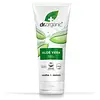What's inside
What's inside
 Key Ingredients
Key Ingredients

No key ingredients
 Benefits
Benefits

 Concerns
Concerns

No concerns
 Ingredients Side-by-side
Ingredients Side-by-side

Aloe Barbadensis Leaf Water
MaskingWater
Skin ConditioningGlycerin
HumectantAlcohol Denat.
AntimicrobialPEG-150 Distearate
EmulsifyingPolyglyceryl-10 Eicosanedioate/Tetradecanedioate
Skin ConditioningDiglycerin
HumectantCannabis Sativa Seed Extract
EmollientOpuntia Ficus-Indica Flower Extract
Skin ConditioningPrunus Avium Flower Extract
Skin ConditioningAgave Tequilana Leaf Extract
AstringentSodium Hyaluronate
HumectantNiacinamide
SmoothingSorbitol
HumectantPullulan
Inositol
HumectantBetaine
HumectantCarbomer
Emulsion StabilisingMaltose
MaskingXylitol
HumectantSodium Hydroxide
BufferingPvp
Emulsion StabilisingPropylene Glycol
HumectantPanthenol
Skin ConditioningVegetable Amino Acids
Skin ConditioningSodium Phytate
Citric Acid
BufferingAlcohol
AntimicrobialBenzoic Acid
MaskingSodium Benzoate
MaskingDehydroacetic Acid
PreservativeBenzyl Alcohol
PerfumingPotassium Sorbate
PreservativePhenoxyethanol
PreservativeAloe Barbadensis Leaf Water, Water, Glycerin, Alcohol Denat., PEG-150 Distearate, Polyglyceryl-10 Eicosanedioate/Tetradecanedioate, Diglycerin, Cannabis Sativa Seed Extract, Opuntia Ficus-Indica Flower Extract, Prunus Avium Flower Extract, Agave Tequilana Leaf Extract, Sodium Hyaluronate, Niacinamide, Sorbitol, Pullulan, Inositol, Betaine, Carbomer, Maltose, Xylitol, Sodium Hydroxide, Pvp, Propylene Glycol, Panthenol, Vegetable Amino Acids, Sodium Phytate, Citric Acid, Alcohol, Benzoic Acid, Sodium Benzoate, Dehydroacetic Acid, Benzyl Alcohol, Potassium Sorbate, Phenoxyethanol
 Reviews
Reviews

Ingredients Explained
These ingredients are found in both products.
Ingredients higher up in an ingredient list are typically present in a larger amount.
Phenoxyethanol is a preservative that has germicide, antimicrobial, and aromatic properties. Studies show that phenoxyethanol can prevent microbial growth. By itself, it has a scent that is similar to that of a rose.
It's often used in formulations along with Caprylyl Glycol to preserve the shelf life of products.
Potassium Sorbate is a preservative used to prevent yeast and mold in products. It is commonly found in both cosmetic and food products.
This ingredient comes from potassium salt derived from sorbic acid. Sorbic acid is a natural antibiotic and effective against fungus.
Both potassium sorbate and sorbic acid can be found in baked goods, cheeses, dried meats, dried fruit, ice cream, pickles, wine, yogurt, and more.
You'll often find this ingredient used with other preservatives.
Learn more about Potassium SorbateSodium Benzoate is a preservative. It's used in both cosmetic and food products to inhibit the growth of mold and bacteria. It is typically produced synthetically.
Both the US FDA and EU Health Committee have approved the use of sodium benzoate. In the US, levels of 0.1% (of the total product) are allowed.
Sodium benzoate works as a preservative by inhibiting the growth of bacteria inside of cells. It prevents the cell from fermenting a type of sugar using an enzyme called phosphofructokinase.
It is the salt of benzoic acid. Foods containing sodium benzoate include soda, salad dressings, condiments, fruit juices, wines, and snack foods.
Studies for using ascorbic acid and sodium benzoate in cosmetics are lacking, especially in skincare routines with multiple steps.
We always recommend speaking with a professional, such as a dermatologist, if you have any concerns.
Learn more about Sodium BenzoateSodium Hydroxide is also known as lye or caustic soda. It is used to adjust the pH of products; many ingredients require a specific pH to be effective.
In small amounts, sodium hydroxide is considered safe to use. However, large amounts may cause chemical burns due to its high alkaline.
Your skin has a natural pH and acid mantle. This acid mantle helps prevent harmful bacteria from breaking through. The acid mantle also helps keep your skin hydrated.
"Alkaline" refers to a high pH level. A low pH level would be considered acidic.
Learn more about Sodium HydroxideSodium Phytate is the synthetic salt form of phytic acid. Phytic acid is an antioxidant and can be found in plant seeds.
Sodium Phytate is a chelating agent. Chelating agents help prevent metals from binding to water. This helps stabilize the ingredients and the product.
Water. It's the most common cosmetic ingredient of all. You'll usually see it at the top of ingredient lists, meaning that it makes up the largest part of the product.
So why is it so popular? Water most often acts as a solvent - this means that it helps dissolve other ingredients into the formulation.
You'll also recognize water as that liquid we all need to stay alive. If you see this, drink a glass of water. Stay hydrated!
Learn more about Water